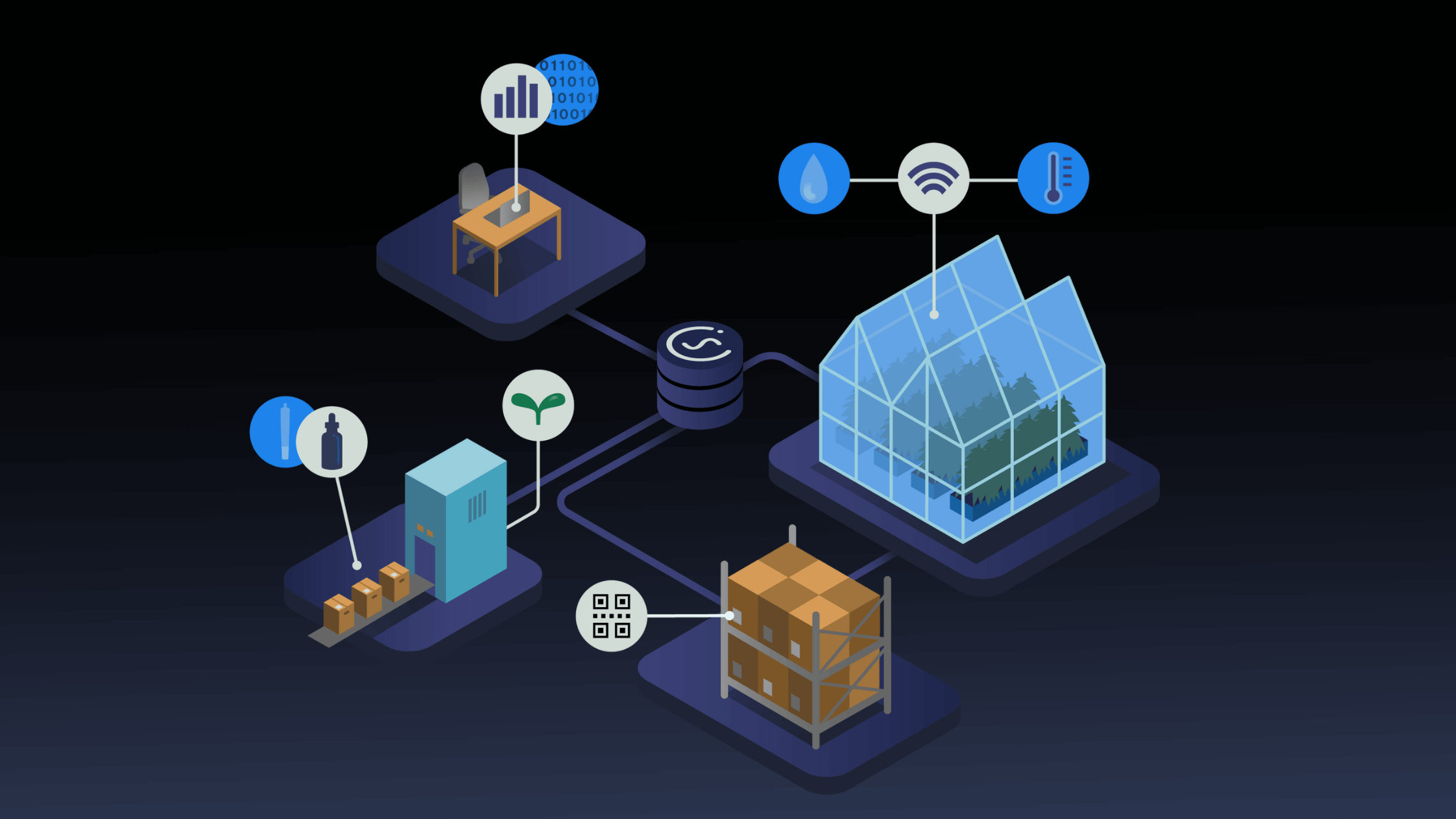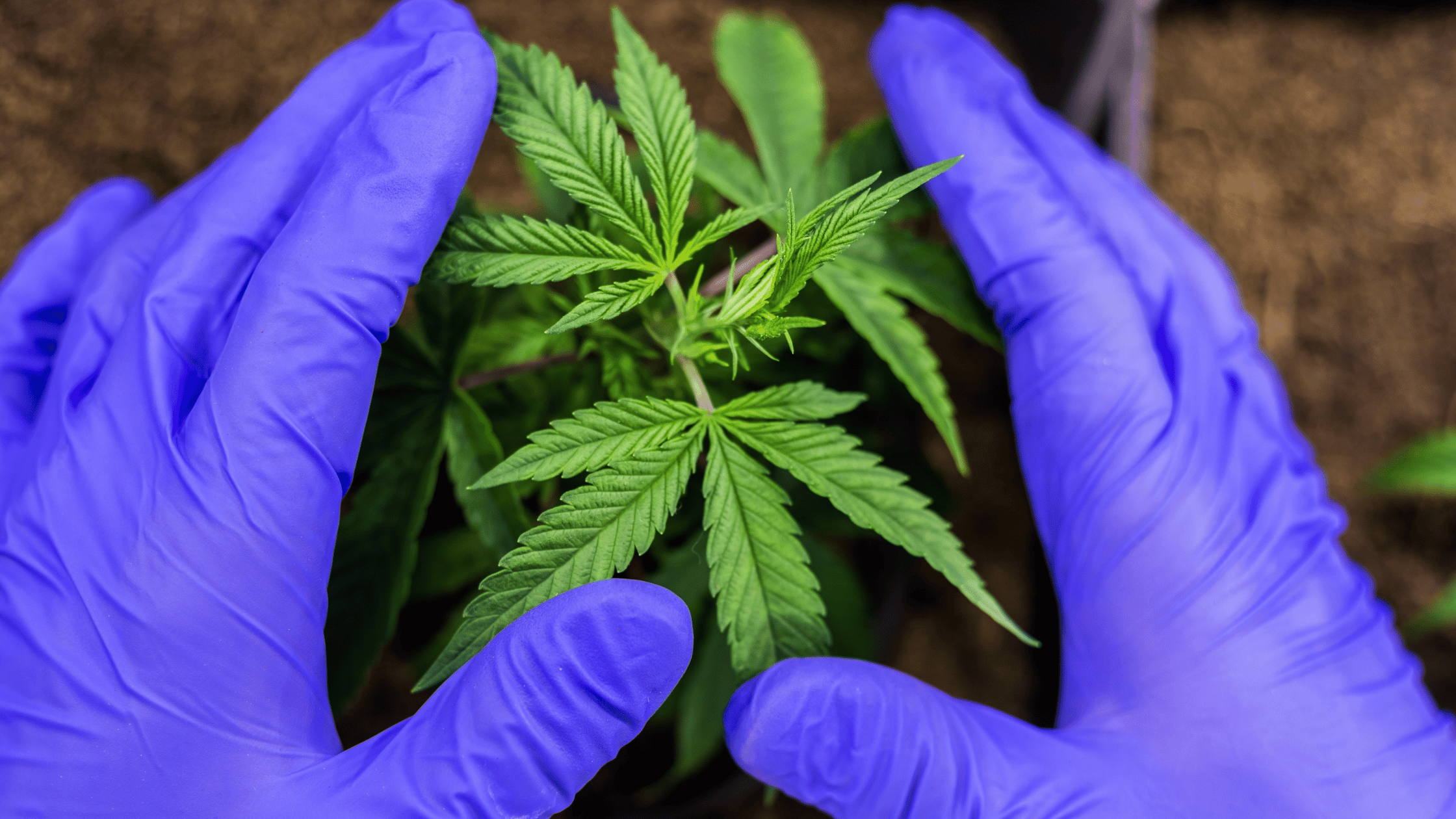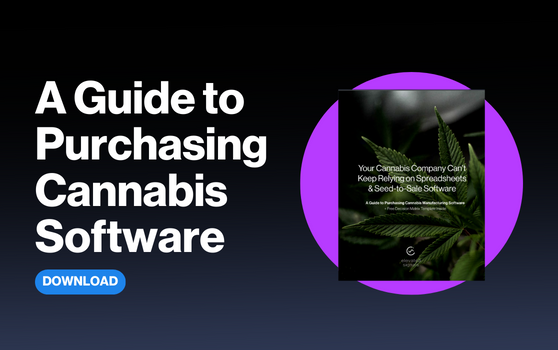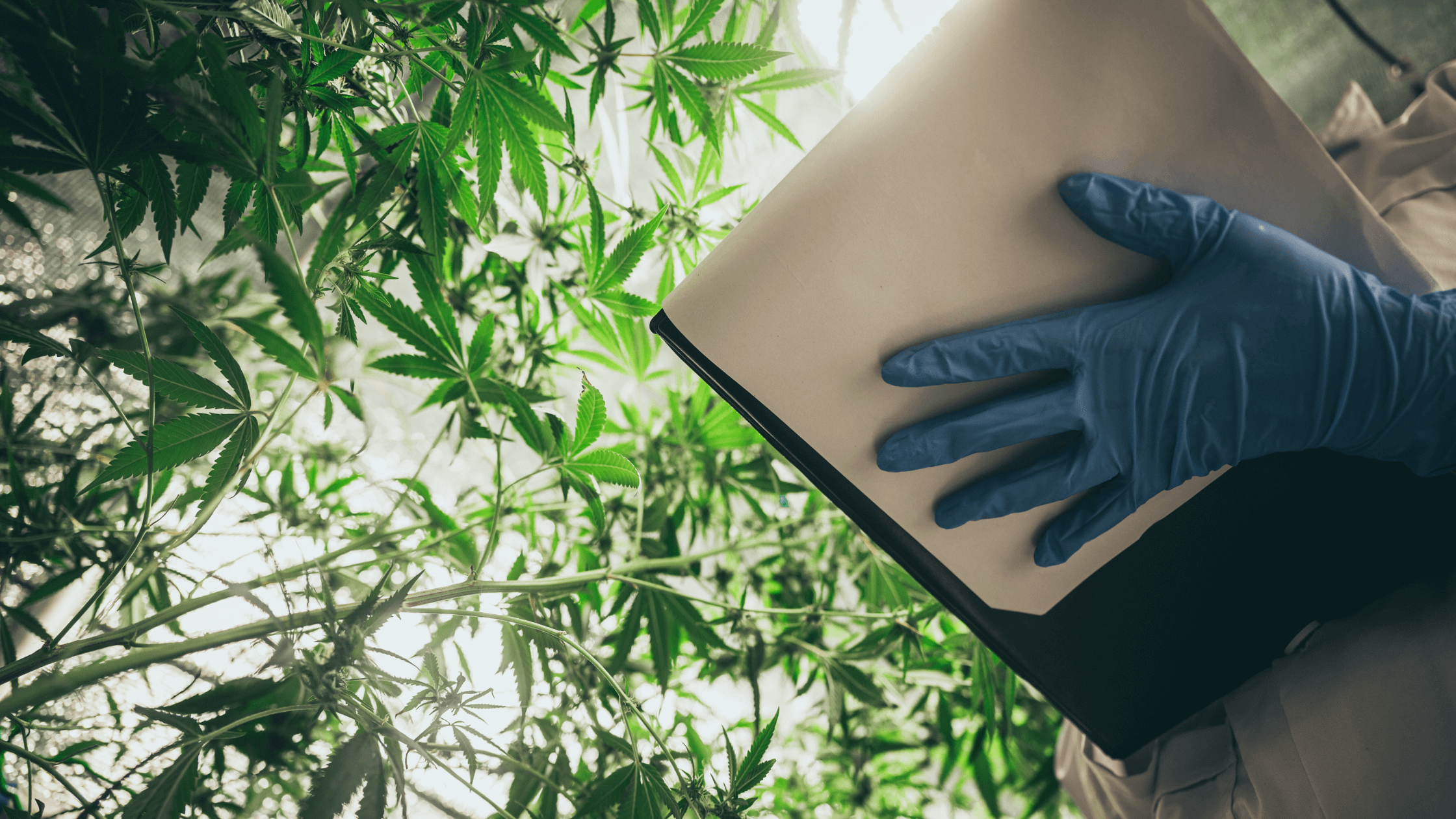There's a laundry list of reasons cannabis producers struggle to stay operational, but longevity comes down to profitability, as in any business.
In today's day and age, it’s difficult for cannabis producers to be profitable, for various reasons, not least the considerable challenges that come with operating in a ‘new’ heavily regulated industry. But it’s not impossible. We find that many producers lack the data to help them understand how to get there.
Robust and accessible data is essential for tracking costs and understanding profitability.
Calculating your product profit margins comes down to understanding cannabis Cost of Goods Sold (COGS). Gaining insight into your operations and understanding your cannabis COGS helps you make better business decisions in the long run.
Read on to learn about cannabis COGS, why they're essential to cannabis cultivators and processors, and how to track and calculate them.
What is Cost of Goods Sold (COGS) for Cannabis?
Simply put, cannabis Cost of Goods Sold is the cost it takes to produce your final product. To calculate COGS, you need to know how much you spend on inventorial costs like raw materials, labour, overhead, and amortization expenses. Cannabis COGS don't include costs associated with marketing, sales or distribution.
Cannabis COGS are calculated for a specific period. This period can be monthly, quarterly or annually. It's up to you to determine the frequency that makes sense for your business, but we recommend calculating them monthly.
How Do I Calculate Cannabis COGs?
COGS = (beginning inventory cost + inventoriable costs during period) - ending inventory cost.
For example, if you had $100k worth of inventory at the beginning of the month, produced $80k of stock, and were left with $60k of inventory at the end of the month, this would be cannabis cost of goods sold calculation:
COGs = ($100k + $80k) - $60k
= $120k for the month
There are different inventory costing methods, including the first in, first out (FIFO) method, commonly used by the cannabis industry. In this model, the cannabis that's produced first will be sold first. For many B2B and B2C cannabis producers, the age of the product is synonymous with product quality and freshness. Older inventory devalues over time, and customers such as provincial distributors will not accept products packaged over six months.
Knowing your COGS is key to calculating your gross profit.
Gross profit = revenue from sold goods - COGS
For example, if your total revenue from sold goods were $200k that month, this would be your gross profit:
Gross profit = $200k - $120k
= $80k
As you may have noticed, these calculations are very simple and give you an idea of how your business is operating as a whole. However, these calculations don't provide insight into how each SKU is performing. Calculating the value of cannabis goods sold and inventory on a SKU basis can become very complicated.
We won't get into this in this post. Instead, we recommend getting in touch with a trusted CPA or an experienced cannabis consultant that can help you determine how to track costs and calculate cannabis COGS.
We recommend reaching out to our trusted partners MNP or Growth West Finance. If you'd like a warm introduction, please reach out to partnerships@elevatedsignals.com.
Why Are Cannabis Cost of Goods Sold Important?
Calculating cannabis COGS is very useful for tax deductions, such as section 280E of the IRS tax code.
Understanding your Costs of Goods Sold allows you to track your gross profits and enable you to uncover if your cannabis production is profitable.
It can also help you forecast revenues and allocate value to inventory in various production stages.
And finally, it can help you uncover inefficiencies in your processes that impact profitability.
Understanding Your Cannabis Cost of Goods Sold
The information required to calculate the cannabis cost of goods sold will vary based on your product and process.
For example, If you're a cannabis operator that produces dried cannabis, data points that you might track to determine COGS include the costs of:
- Seeds
- Soil
- Nutrients
- Water
- Electricity
- Testing
- Labour from cloning to packaging
- Other facility overhead costs
In addition to the inventoriable costs, you should be able to track the time it takes to go from clone to packaged product and know the expected yields for your strains. This will help you allocate value to inventory on hand in various stages of production.
This information is certainly not easy to track and collect. Many cannabis companies track this data during the production process using various collection methods, such as paper records, spreadsheets and outdated seed-to-sale software. Access to this information is critical to understanding whether you're profiting from your sales, where you can improve your business, and identify new opportunities.

Data-Driven Cannabis Production
What makes the cannabis industry unique is that's is so new. There is no playbook for running a successful cannabis company, meaning that every cannabis company is operating like a start-up. And cannabis producers with a start-up mentality are the ones that are going to be successful in the long run.
Start-ups are in limbo, not yet established in the market, and have a lower tolerance for mistakes before they fail. That's why start-ups need to have as much data as possible to help make informed decisions about the business.
At this point, capital in the cannabis industry is not readily available, so companies need to be strategic in how they deploy it. For example, how do you decide how to expand your pre-roll packaging line? Do you hire more labour or invest in a pre-roll packaging machine? To compare the two, you need data on your existing operations to make the right decision.
This sort of decision-making falls under managerial accounting. Financial accounting focuses on informing those outside the company about the business's financial state. In contrast, managerial accounting generates information for the company's internal use. Managerial accounting aims to use the company's resources efficiently and inform business decisions.
Tracking costs is crucial for financial accounting, such as reporting to investors or the government, and it's also key for managerial accounting. Collecting data on the production floor and associated costs can improve process efficiency and help you make smarter business decisions.
How Cannabis Producers Track Costs
Tracking costs for your cannabis business is essential. Cannabis Cost of Goods Sold helps you understand if the products you manufacture and sell are profitable.
You might have a SKU that's flying off the shelves, this is great and does wonders for a company's reputation, but it's essential to know whether you profited from or lost money on its sale to have a sustainable company in the long run.
If you calculate your cannabis Cost of Goods Sold and realize your product isn't profitable, it empowers you with information to make a change in your business. The first thing you can do is increase the price of the product, or you can lower production costs to improve your profit margin. The beauty of knowing your COGS is that it highlights where inefficiencies exist in your processes. Streamlining operations is one of the most effective cost-reduction strategies.
The real challenge for cannabis producers is tracking the cost of production in the first place. Most cannabis companies determine their cannabis Cost of Goods Sold primarily based on sales data rather than detailed information about the actual price of making the product.
For example, when producing dried cannabis, companies might estimate the cost of inputs, labour and utilities required to create a batch. The production process and inputs needed to grow and process dried cannabis of various cultivars are similar. If a company uses estimates to calculate production costs, there would be no variability in production costs between the different batches or cultivars. Essentially the company would assume that the cost to produce all dried cannabis products, regardless of the cultivar or the individual batch, is the same.
This strategy might work in manufacturing industries such as automotive or pharmaceutical since the production process is controlled and doesn't change over time. But cannabis cultivators know that the nutrient mix, environment and yield can vary significantly between batches of the same cultivars, especially between different cultivars.
Why traditional cost-tracking methods don’t work for cannabis producers
It's common for the growing and manufacturing process to be adjusted depending on many factors. Input and labour costs can also fluctuate (E.g. increased nutrient price due to supply chain issues), which adds to the complexity of calculating production costs. This is why averaging out the costs of labour and inputs doesn't provide a complete picture or reflect the cost of each batch or product. Cannabis producers need to have a method of calculating these costs for each batch to get a real insight into their COGS.
In reality, producers have all of this information, but it's inaccessible. It lives in paper records, online spreadsheets, and other systems, making it hard to extract this data in a way that makes ongoing calculations of COGS sustainable.
Suppose a producer had an easy way to access information about the cost of production. In that case, they might discover that one cultivar produces significantly more waste and has a lower yield than another, meaning that more resources and costs went into it, and the overall profit margin is lower. If these two cultivars perform similarly on the market, the producer can decide to continue growing one cultivar and scrap production of the other.
Accurate real-time data is required to calculate gross profit and make informed business decisions. This data is essential to distinguish financial drivers and take steps toward profitability. Of course, this is easier said than done, but there are ways to make this a reality.

Making Cannabis Cost Tracking Easier
Luckily, software is available to help make cannabis cost tracking easier. However, while other industries often use the same software systems regardless of the product they are manufacturing, cannabis is different. It’s a unique product and requires a bespoke system, not something that’s been developed for the likes of healthcare, automotive or retail.
Traditionally Enterprise Resource Planning (ERP) software is a Chief Financial Officer’s (CFO) favourite tool to help with COGS and financial planning. Many cannabis companies take this route and implement this sort of software to help them track costs and calculate cannabis Costs of Goods Sold. In reality, it's tough for companies to implement this software successfully. This is because a few challenges present themselves with ERPs in the cannabis industry.
The first challenge is getting information into your ERP. If you're using a paper and pen recordkeeping system, you will need dedicated staff to collect and input that information. You might need to hire additional staff to manage this system, and there is a lot of room for human error.
Because that data collection from paper records takes a significant amount of time, this likely means that you'd be running your business on two-week-old data. Your business decisions would always be reactive and never proactive, putting the company at risk of double allocating sales and not having clear visibility into executing new opportunities.
As mentioned earlier, unlike traditional manufacturing industries such as automotive and pharmaceuticals, production processes in cannabis facilities are frequently evolving, especially where cannabis plants are involved. Cannabis producers can't average inputs and labour costs over all the different products produced in a cannabis facility. ERPs aren't very flexible or well adapted to frequently changing processes.
On top of that, ERPs are complicated to implement and can cost hundreds of thousands of dollars to maintain.
ERP software is supposed to make tracking costs for cannabis producers easier, but data collection is a pain, and there remains a gap between the facility floor and the software.
Digitizing Data on the Production Floor
There's an easier way to track production costs, and it's by digitizing data collection on the production floor. Manufacturing Execution System (MES) software such as Elevated Signals allows teams to digitally complete records and input data directly into the system, rather than using paper records, spreadsheets and seed-to-sale software. The result is detailed batch and production data housed under one system.
Records are logged into the system as they happen, allowing for the most up-to-date information to be immediately accessed by operations, quality and finance departments in real-time.
MES can pull different reports to extract valuable information used to calculate cannabis Cost of Goods Sold. This data can be aggregated in the form of reports and fed into an ERP or data analytics software such as Power BI, Science, Tableau, Looker, or Snowflake to provide business intelligence and calculate COGS.
MES software can give you access to accurate, real-time data to help calculate COGS and also reduces the labour required to manually collect records and information to be added into ERPs or analytics tools.
COGS Are Essential for Cannabis Business Profitability
Collecting current and accurate data without a centralized data source is challenging. This problem leads to a lack of understanding of the Cost of Goods Sold by cannabis producers and hinders their ability to make business decisions to drive profitability.
Tools that help collect, aggregate and analyze data empower companies to identify opportunities for profitability.
If you're interested in learning more about how Elevated Signals Manufacturing Software can help, check out our buyer's guide.




